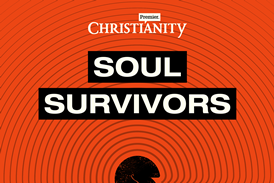Keeping a Christian organisation Christian isn't easy. Can this book help?
By  Ben Boland2025-09-03T10:50:00
Ben Boland2025-09-03T10:50:00

Bill Simmons’ new book offers a simple yet thoughtful framework for keeping Christian organisations rooted in faith. But while its “Pause, Psalm, and Pray” model is commendable, it struggles to hold up as a standalone resource, says our reviewer
Leading a Christian organisation is tough, and leading a parachurch organisation, that is, a Christian faith-based organisation that works outside and across denominations to engage in social welfare and evangelism, can be even more challenging than pastoring a church. Beyond the usual business pressures of budgets, strategy, and staff management, parachurch organisations often operate in spaces traditional businesses avoid due to low profit potential and high risk. Yet perhaps the greatest challenge for any CEO in this context is ensuring that the organisation remains distinctly and authentically Christian.
YMCA is perhaps the classic example. Does the ‘Y’ do great work across 120 countries? Yes. Is it still a Christian organisation, as the ‘C’ was Christian? Unfortunately, no.
This challenge is especially pressing for Christian training and care organisations. Consider Harvard, Yale, and Princeton in the United States, or Oxford, Cambridge, and Edinburgh in the United Kingdom. All were founded as overtly Christian institutions, created to glorify God. Today, they remain powerful and prestigious, yet their original mission of glorifying God has long since faded. The issue isn’t about theological shifts - Catholic versus Protestant, conservative versus liberal, Pentecostal versus formal. Rather, it’s that many once-Christian organisations are now, at best
Related articles
-
 Reviews
ReviewsThis Advent devotional reveals the Holy Spirit’s role in Christmas
2025-12-09T09:48:00Z By Dr Joshua Bloor
For her new 25 day Advent devotional, award-winning author Cynthia Ruchti turns her attention to the role of the Holy Spirit in the Christmas story, says our reviewer
-
 Reviews
ReviewsRich Villodas’ new book will teach you how to wait well this Advent
2025-12-01T16:40:00Z By Hena J Bryan
In his new book Waiting for Jesus, pastor Rich Villodas offers a deeply reflective 25-day devotional, says our reviewer
-
 Reviews
ReviewsThe perfect Christmas book for loved ones who don’t know Jesus
2025-12-01T16:32:00Z By Debbie Duncan
David Platt’s oustanding book, All You Want for Christmas, delivers the gospel in just 92 pages, says our reviewer
- Issues
- Topics A-Z
- Writers A-Z
- © 2025 Premier Christianity
Site powered by Webvision Cloud


























